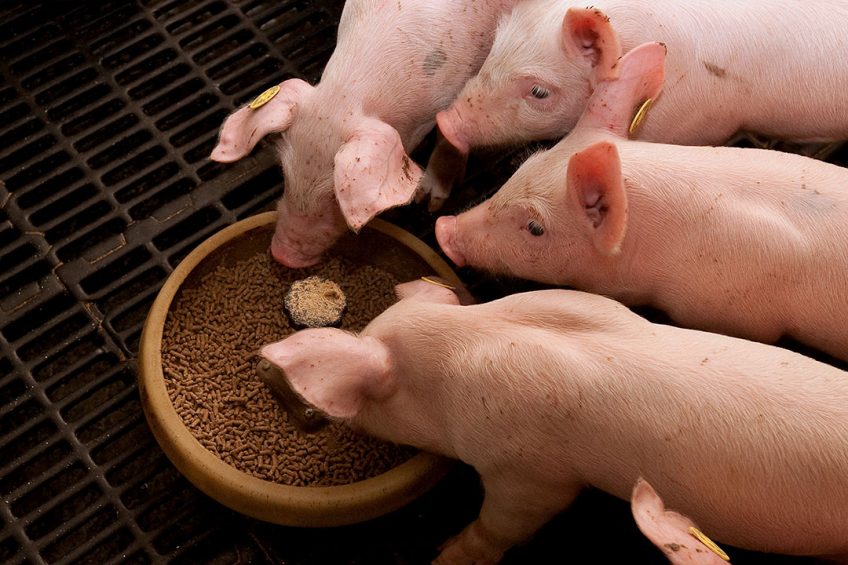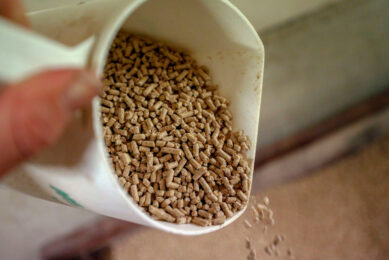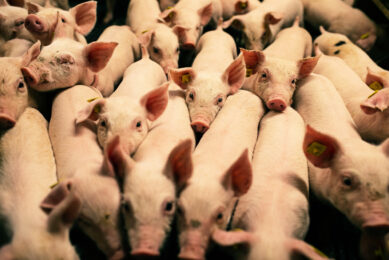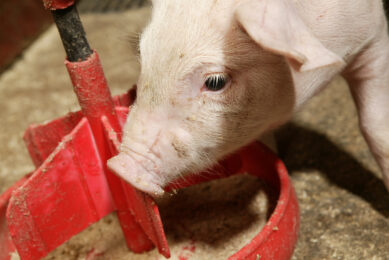Effect of torula yeast on weanling pigs

Animal protein sources such as fish meal and plasma protein are commonly used in diets for weanling pigs to improve feed intake and intestinal health. However, due to increased cost and reduced availability, use of animal proteins has decreased and single cell protein is a potential alternative source of amino acids.
Yeasts and yeast derivatives contain amino acids, mannans, β-glucans, and nucleotides, and may be used as feed additives in pig diets to improve intestinal health and growth performance. However, yeast can also be used as a feed ingredient because it has a high concentration of digestible amino acids. Torula yeast is a yeast strain that may be grown on wood biomass because it uses xylose and glucose as substrates, which makes it a sustainable alternative protein source for pigs. Torula yeast derived from forestry by-products have been recently developed and is considered a potential sustainable feed ingredient for swine diets because it has lower carbon-footprint than other yeast products. This single-cell protein has an enhanced amino acid profile and recently, three experiments were conducted to test the hypothesis that values for the standardised ileal digestibility (SID) of amino acids, concentration of metabolisable energy (ME), and the standardised total tract digestibility (STTD) of P in torula yeast are not different from values obtained in a commercial source of fish meal.
Nutrient digestibility results
Greater (P < 0.05) SID of amino acids was observed in torula yeast than in fish meal (Figure 1), and a similar response was observed for the STTD of P with values of 91% and 68% in torula yeast and fish meal, respectively. However, there were no differences in the concentration of ME (dry matter basis) between torula yeast (3,636 kcal/kg) and fish meal (3,611 kcal/kg). The effect of inclusion of 1,000 units of microbial phytase on the STTD of P was also evaluated, but the response was not significant for either ingredient, which is likely because the concentration of phytate in both ingredients was low. Overall, although the concentrations of amino acids and P are lower in torula yeast than in fish meal, the greater digestibility observed in torula yeast resulted in similar values for concentrations of digestible amino acids between torula yeast and fish meal.
Growth performance experiments
Following the three digestibility experiments, an experiment was conducted to test the hypothesis that fish meal and plasma protein can be replaced by torula yeast in phase 1 diets without compromising growth performance of pigs. A 2-phase feeding programme was used with d 1 to 14 as phase 1, and d 15 to 28 as phase 2 and the torula yeast diets were formulated based on the digestibility data for SID of amino acids, and the STTD P in torula yeast that were obtained in the digestibility experiments. Pigs were fed 1 of 4 diets during phase 1, but a common diet in phase 2. The four experimental diets in phase 1 were formulated to have:
- 5% fish meal, 2.5% plasma, and no torula yeast;
- 5% fish meal, 4.75% torula yeast, and no plasma;
- 2.5% plasma, 6% torula yeast, and no fish meal and
- 10.75% torula yeast, no fish meal, and no plasma.
Results indicated that inclusion of torula yeast in diets did not affect growth performance (Table 1), diarrhoea incidence, or blood indicators for nutrient utilisation and inflammatory responses in weanling pigs.
In addition to digestible amino acids and P, torula yeast contains β-glucans and glycoproteins, which may have supported growth of pigs in diets without fish meal and plasma protein, and it was concluded that at least 10.75% torula yeast may be included in diets for weanling pigs as replacement for fish meal and plasma protein. However, results of this experiment did not determine if greater inclusion rates may be used. Therefore, a follow-up experiment was conducted to test the hypothesis that inclusion of torula yeast above 10.75% in diets fed to pigs improves growth performance. A 2-phase feeding programme was used with d 1 to 14 as phase 1, and d 15 to 28 as phase 2. Phase 1 diets contained 0, 10, 18, or 26% torula yeast, whereas phase 2 diets contained 0, 8, 14, or 20% torula yeast.
Torula yeast was included in diets at the expense of animal proteins and soybean meal. Results indicated that torula yeast can be included in phase 1 diets up to 26% without affecting growth performance (Table 2) or diarrhoea incidence of pigs.
No differences were observed for final body weight (BW), average daily gain (ADG), or gain to feed ratio (G:F) among pigs fed the four experimental diets. During phase 2, a reduction in average daily feed intake (ADFI) was observed in pigs fed diets containing 20% torula yeast, but an improvement in G:F of pigs was observed if diets contained at least 14% torula yeast. It therefore appears that pigs digest and utilise nutrients more efficiently from diets containing torula yeast and it is possible that torula yeast exerts a positive effect on digestive function and nutrient digestibility of pigs, but data from this experiment were not sufficient to confirm this hypothesis. There were also positive changes in blood concentrations of albumin, total protein, and tumour necrosis factor-α of pigs fed diets containing torula yeast indicating that torula yeast may improve nutrient utilisation and inflammatory responses of weanling pigs. Globulin accounts for approximately 38% of the total plasma protein, and β-glucans from torula yeast may have increased globulin production resulting in a subsequent improvement in the immune function of pigs.
Positive effect of torula yeast
Torula yeast contains highly digestible amino acids and can replace fish meal and plasma protein in diets for weanling pigs without affecting growth performance. However, feed efficiency of pigs may be increased if 14% torula yeast is included at the expense of animal proteins and soybean meal. This improvement in G:F of pigs is likely a result of an enhanced digestive function and nutrient digestibility, which is supported by the positive effect of torula yeast on blood indicators for nutrient utilisation and inflammatory responses. However, additional research is needed to fully understand the mechanism for the improved G:F.






